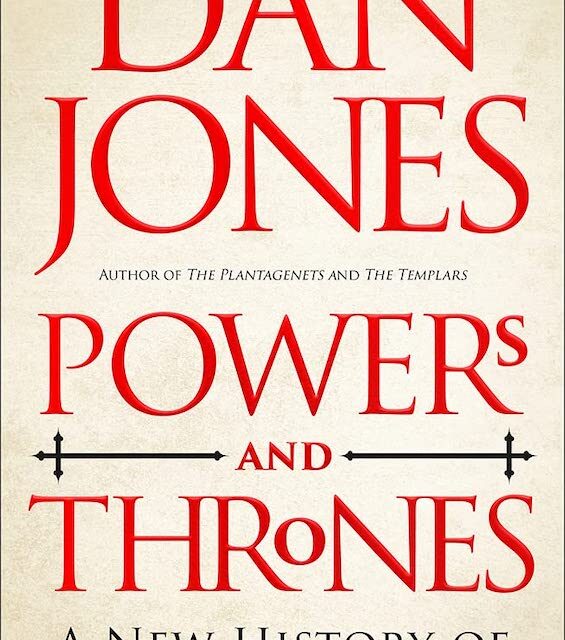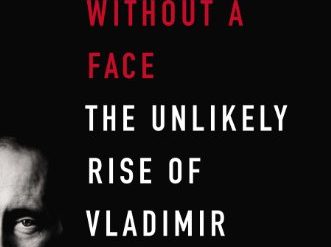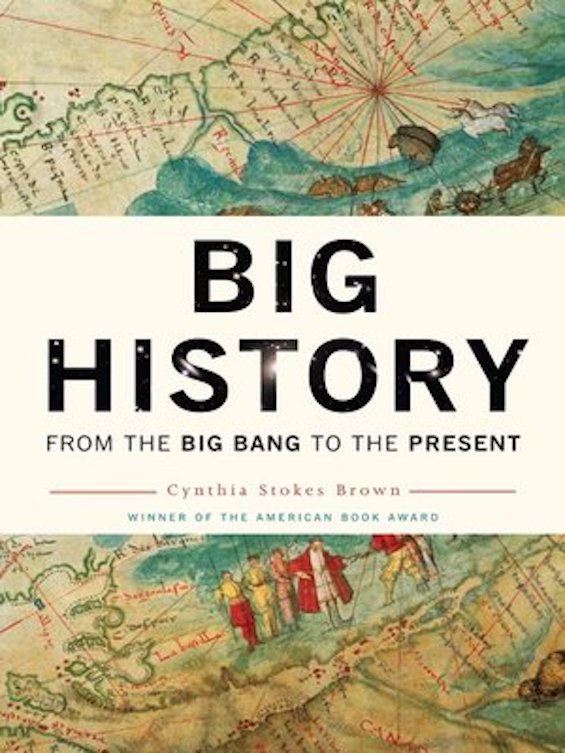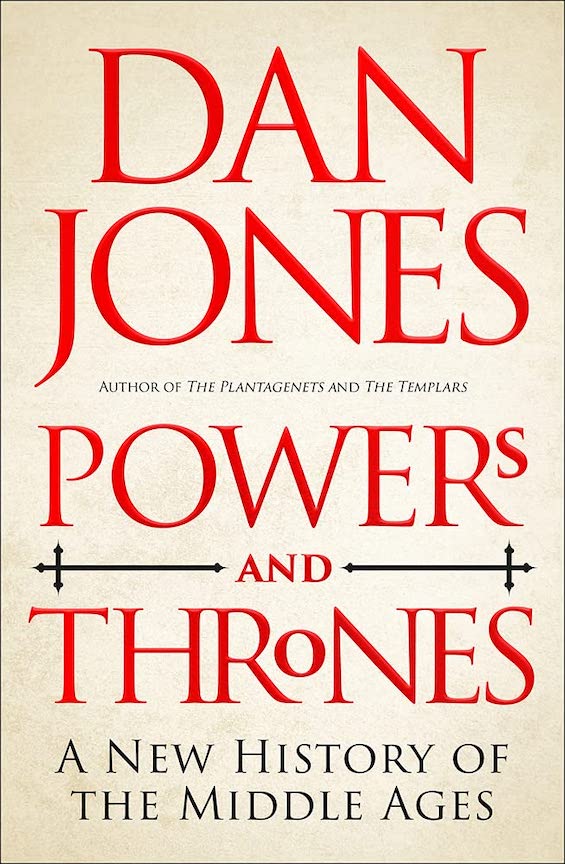
Estimated reading time: 10 minutes
Today the term “medieval” implies ignorance, backwardness, and barbarism. It’s the fruit of the long-held belief that the millennium between the implosion of Rome and the fall of Constantinople in 1453 were the “Dark Ages,” when monks were hunched over manuscripts in candlelight and little of consequence happened. Historian and journalist Dan Jones puts this shibboleth to rest in his insightful new popular history of the Middle Ages, Powers and Thrones. Dipping into the latest research in archaeology, climate science, and the history of technology as well as new historical research, he examines with a fine eye the evidence of change in the Middle Ages, sussing out the events that suggest parallels with our own time.
A broader view of change in the Middle Ages
Most historians view the Middle Ages as consisting of three periods. The years from about 500 to 1000 CE constituted the Early Middle Ages. The High Middle Ages ran from 1000 to 1300 CE. And the Late Middle Ages encompassed the years from about 1300 to 1453 or 1500 CE, when the European colonization of the New World was underway. Dan Jones doesn’t follow that outline. He dates the beginning of the era to 370, when the Mongols crossed the Volga River and began pressuring the Gothic tribes on the western shore to advance further into Europe, a movement that ultimately led to the fall of Rome. And he treats the early decades of the 16th century, with the Renaissance and the settlement of the Americas well underway, as the final years of the Middle Ages. But these are academic distinctions. They matter little.
Powers and Thrones: A New History of the Middle Ages by Dan Jones (2021) 802 pages ★★★★☆
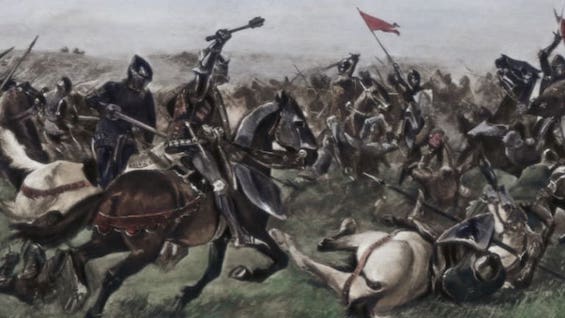
An ethnocentric history
What matters more is that Powers and Thrones isn’t, properly speaking, a history of the Middle Ages. It’s primarily a history of medieval Europe—Western Europe in particular, and Britain above all. Jones treats the growing power of Islam and the Mongol Empire largely in terms of their impact on the nations of the West. Missing from this account are the equally monumental and engaging events and personalities of China, India, Africa, and the Americas in the millennium between 500 and 1500 CE. Ethnocentrism strikes again. To be fair, of course, there was no corresponding “medieval” period in other regions of the world. But equally compelling stories can be told about developments in those places between the last gasps of the ancient world and the first glimmering of the modern era. Change was a constant everywhere in the world in the period we call the Middle Ages.
Despite these drawbacks, Powers and Thrones is an illuminating piece of work. In thirteen chapters, Jones traces the history of Western Europe and the forces that impinged on it. The book is organized within four broadly chronoiogical sections. Along the way through the history, he devotes individual chapters to what today we would call the principal “ethnic groups” or “nations” (though it would be many hundreds of years before those terms would be used): Romans, Barbarians, Byzantines, Arabs, Franks, Mongols. Other chapters explore the emblematic occupations of the era: Knights, Crusaders, Merchants, Scholars, Builders, Navigators. Three other chapters, interspersed among the others, cover cross-category topics: Survivors, Renewers, Protestants. It’s a highly readable approach.
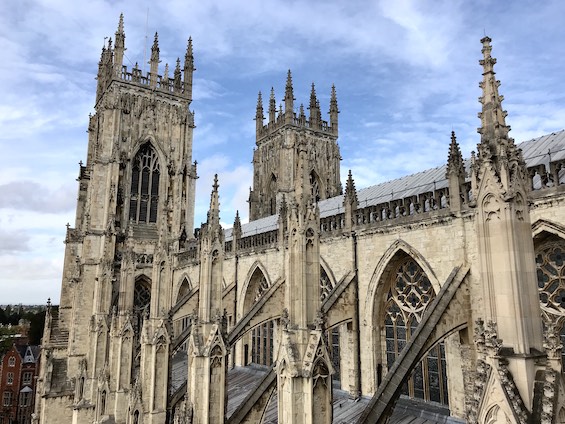
Answering some of history’s bigger questions
When we read history, most of us are likely to accept what we read as simply what happened. Change simply takes place, whether in the Middle Ages or in our own time. We don’t often stop to wonder why and how things turned out the way they did, other than merely to assume that one thing led to another. But a more careful reading raises questions. And some of the answers clearly emerge in Dan Jones’ account. Two examples follow. There are numerous others throughout Powers and Thrones.
Where did all those monasteries come from?
The Middle Ages was a violent and turbulent era. There were few defined boundaries in Western Europe between the kingdoms, principalities, city-states, and the fiefs of minor lords and knights. They were constantly at war with one another. Those “Christian warriors” needed a way “to make sure that they did not go to hell for their sins. Monasteries provided a neat solution. To atone for sins, the Church recommended penance and prayer. This was time consuming, uncomfortable, and impractical for people who had jobs to do fighting and killing one another.
“Fortunately, the Church was very open-minded about how penance was to be done, and Church authorities had no problem with the rich paying others to do their penance for them. . . The result was that from the ninth century onward, founding, endowing, or donating to monasteries became a popular pastime for rich men and women.” Perhaps there’s a parallel here to the proliferation of charitable foundations today in the United States. At the latest count, there were nearly 120,000 of them. Are the rich in America buying penance for their sins?
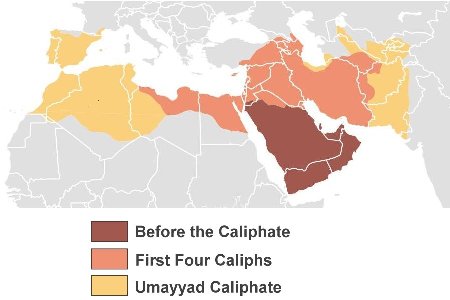
Why did the Muslim world become the West’s center of learning and science?
For centuries, historians termed the period following the fall of Rome as the Dark Ages. The time was “dark,” in their view, because the early Christian church disdained the study of classical knowledge, which they regarded as grounded in pagan values. So, Aristotle, Plato, Archimedes, and the great poets and writers of Rome were no longer fit subjects for study. Like the madrasas of the Middle East today where religious scholars focus exclusively on the Qu’ran and the Hadith, ignoring all other avenues to understanding the world, medieval monasteries permitted study only of approved Christian literature. The West descended into “darkness.”
Change began around 700 CE
But the rise of Islam in the 7th century brought change to the Middle East. “Around the year 700,” Jones writes, the Caliph “al-Malik ordered that public servants across the Umayyad world should use one language only: Arabic. The commonest tongues used by the non-Arabs who made up the vast majority of the caliphate’s population were Greek and Persian. Al-Malik made no provision against people speaking them as they pleased—but he decreed that they could no longer do so while working for him. At a stroke, the Christians, Jews, and Zoroastrians who had found gainful employment as scribes, middle managers, and bureaucrats were faced with a stark choice. Unless they knew or very quickly learned Arabic, they were out of a job.
Making Arabic the lingua franca
“By enforcing [Arabic’s] use as a universal tongue across the caliphate, he transformed it into a global language of record and inquiry. Arabic became a lingua franca every bit as potent as Latin and Greek. As a result it was as useful to scholars as it was to civil servants. During the Middle Ages Arab scholars compiled, translated, and preserved hundreds of thousands of texts from across the classical world, and the Arab-speaking Islamic world inherited the Greek and Latin world’s position as the west’s most advanced intellectual and scientific society.”
Comparing the world’s empires
As Jones makes clear in his introduction and in the book’s title, Powers and Thrones is principally about the empires that dominated the period: Roman, Byzantine, Islamic, Mongol. As I read his account, I began to wonder how those empires stack up historically against others that have risen and fallen in the course of 5,000 years of recorded history. Digging around online, I constructed the following table to compare the biggest empires in history at their greatest extent. Each is identified by the (arbitrary) year when it reached its peak, by its land area, and by the percentage of the world’s population it held at the time.
| Empire | Year | Square miles | % of world’s population |
| British | 1938 | 13.0 million | 20% |
| Mongol | 1279 | 9.2 million | 25% |
| Russian | 1913 | 9.1 million | 9% |
| Spanish | 1740 | 7.7 million | 12% |
| Chinese | 1851 | 5.7 million | 35% |
| Muslim | 720 | 5.0 million | 30% |
| Roman | 117 | 2.3 million | 33% |
At the point of its greatest expansion in the second century CE, the Roman Empire housed a population of approximately 60 million. Its contemporary, the Chinese Empire, was estimated to have a population of roughly the same number, and its land area was comparable. The two empires encompassed about two-thirds of the world’s population in their time. But they were small in both population and land area compared to later empires.
It’s also interesting (for me) to note that today the USA sprawls over some 3.8 million square miles and China over 3.7 million. The American population of approximately 330 million is only about 4% of global population. By contrast, China, with 1.4 billion people, comprises 18 percent.
About the author

Wikipedia tells us that Dan Jones (1981-) “is a British historian, TV presenter and journalist. He was educated at The Royal Latin School, a state grammar school in Buckingham, before attending Pembroke College, Cambridge.” His parents were Welsh. Powers and Thrones is the ninth of the history books he has published, most of which delve into the Middle Ages for their subject matter. Jones also has built a career presenting historical documentaries for Britain’s Channel 5. As a journalist, he writes a column for a major London newspaper and has produced articles for other leading British newspapers and magazines. He lives in Surrey with his wife, two daughters and son.
For related reading
I”ve also reviewed The Plantagenets: The Warrior Kings and Queens Who Made England by Dan Jones (The many great stories of Britain’s bloodiest dynasty).
For a different take on the period, see The Bright Ages: A New History of Medieval Europe by Matthew Gabriele and David M. Perry (A fresh look at the history of the Middle Ages).
Ellis Peters’ long-running series of Cadfael mysteries is set in 12th-century England. I’ve reviewed many of them here. For a taste, you might turn to A Morbid Taste for Bones (The first book in the delightful Brother Cadfael series).
For yet another perspective on the Middle Ages, see The Long Ships by Frans B. Bengtsson (A Viking saga reminiscent of myth and legend).
I’ve also reviewed three other novels about the Middle Ages:
- Agincourt by Bernard Cornwell (A brilliant account of the English victory at Agincourt in 1415)
- The Evening and the Morning (Kingsbridge #1) by Ken Follett (Ken Follett sets up the Kingsbridge Trilogy in a prequel)
- Cathedral by Ben Hopkins (This beautifully written novel illuminates life in medieval Europe)
You might also enjoy:
And you can always find my most popular reviews, and the most recent ones, on the Home Page.

